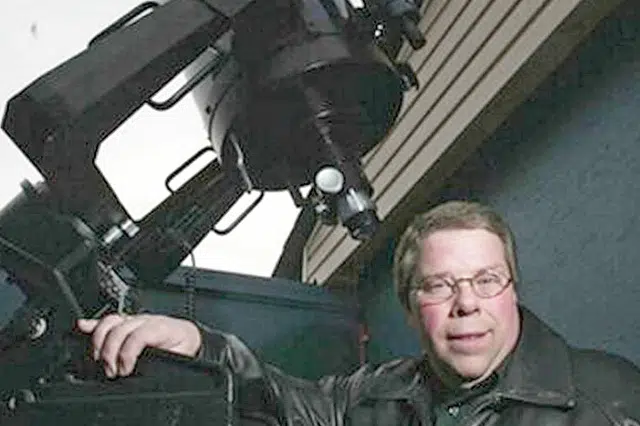Backyard Astronomer Gary Boyle has been extremely busy discussing the impending solar eclipse, which, throughout a specific 185-kilometre-wide path will see the moon completely cover the sun and provide a maximum of three to four minutes of totality.
Even Boyle has never witnessed this particular celestial event.
Well past prehistoric times, superstitions persisted that when a total eclipse occurred, it portended the end of the world.
The eclipse path starts in Mexico, then continues over the border through Texas, and east-northeast through nine other U.S. states ending in Maine.
In Canada, we pick up the trail in Ontario’s Niagara Region, then follow it along the 401 to Quebec, New Brunswick, P.E.I. and Newfoundland.
Elsewhere in North America viewers will witness a partial eclipse; and if it’s cloudy, then what?
Boyle says never look at the sun without a solar filter. Certified eclipse glasses are best purchases from a reputable telescope dealer but as many of these may be out of stock, a piece of number 14 welder’s glass can also be used.
Trying to be creative or too fancy even with proper equipment can have serious consequences. For example,
never place a filter behind the eyepiece as the concentrated solar beam will act as a laser and melt the filtre- and unfortunately your eye.
Kids may wish to construct a pinhole camera made from a cereal box. Plans can be found online.
Once the moon completely covers the sun along the eclipse path, there will be some fleeting viewing opportunities to see the sun’s outer corona as well as the bright planet Jupiter at the eleven o’clock position and Venus down at five o’clock.
But be well-aware of how long the totality is listed for your area and know when to hold up the filter before the bright sun emerges from behind the moon!
With the above-mentioned safety precautions and a little luck with the weather, this will be a moment in time that you will never forget.
Known as “The Backyard Astronomer”, Gary Boyle is an astronomy educator and former monthly columnist for the Royal Astronomical Society of Canada. In recognition of his public outreach in astronomy, the International Astronomical Union has honoured him with the naming of Asteroid (22406) Garyboyle.
For more, visit wondersofastronomy.com
By Rick Stow
